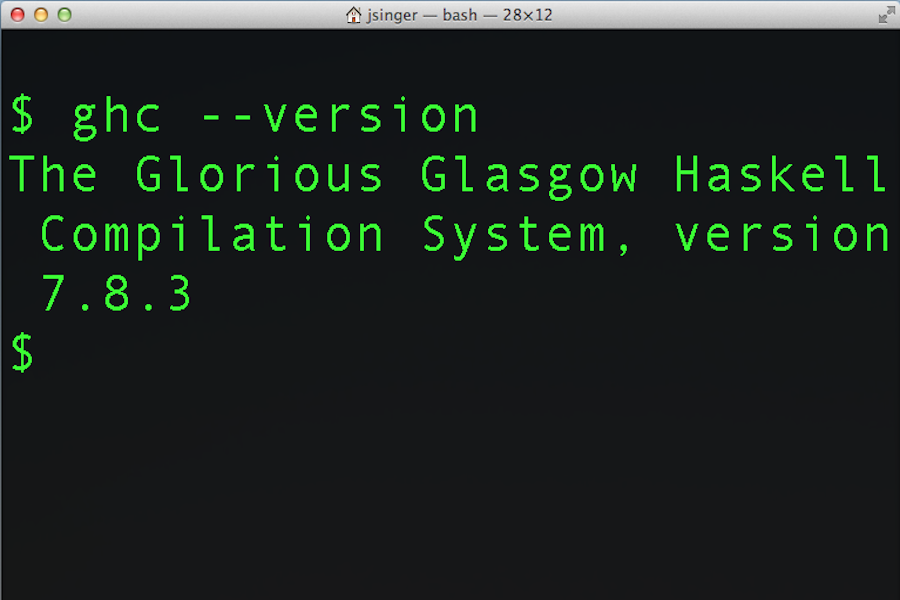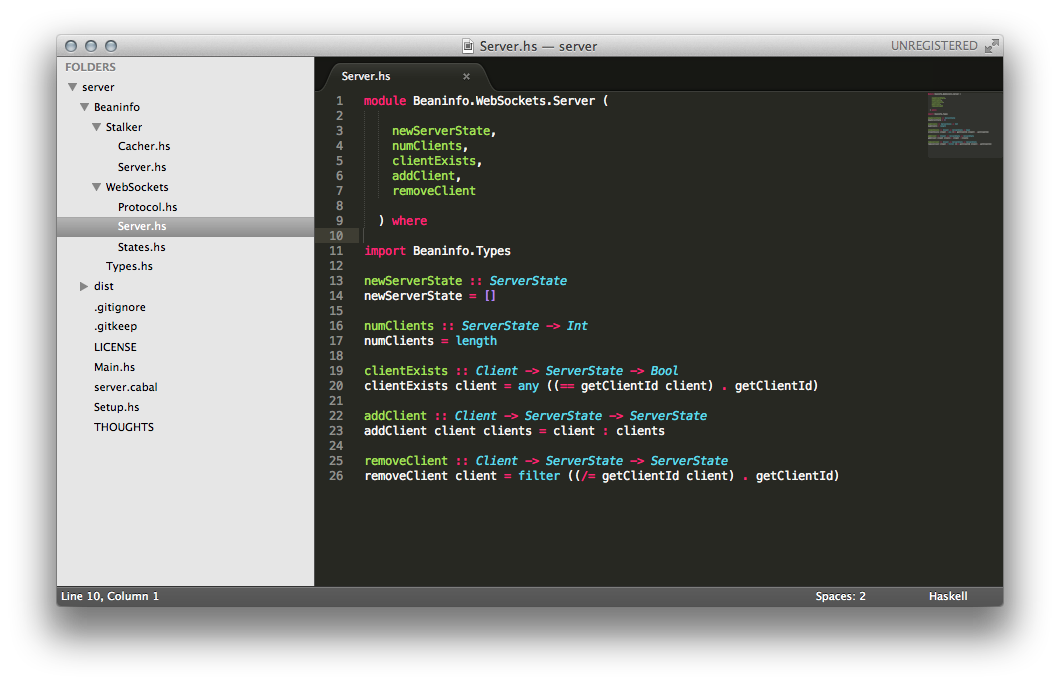

- #Haskell for mac how to#
- #Haskell for mac for mac os#
- #Haskell for mac install#
- #Haskell for mac code#
However, you probably should just use cabal init for your first Haskell project because summoner requires installation to be done first. summoner can generate for you much more than what cabal init can, and it won’t ask you any redundant question. $ cabal init # initialize project in this directoryĪs an alternative, you can use the summoner tool. $ cd cabal-example # go into this directory $ mkdir cabal-example # create project directory Cabal will then guide you through the interactive process, and ask you several questions regarding the structure of your project. To create a new project you can run the cabal init command.
#Haskell for mac install#
The easiest way to install cabal and ghc for Windows is to install the Haskell Platform, which you can do following the instructions at:Īs an alternative you can chocolatey, a package manager for Windows: If you want to work with multiple GHC versions on macOS, you may find neat haskell-on-macos.py script useful:
#Haskell for mac for mac os#
To get cabal for Mac Os you can just use brew: $ brew install ghc cabal-install $ echo 'export PATH="$PATH:/opt/ghc/bin"' > ~/.bashrc To make development easier, you can also add those binaries to your $PATH environment variable. The Glorious Glasgow Haskell Compilation System, version 8.6.3Ĭompiled using version 2.5.0.0 of the Cabal library You can check the versions of the installed binaries like so: $ /opt/ghc/bin/ghc -version

NOTE: It’s best to install cabal HEAD since it has better support for the commands we will use to build projects with cabal. $ sudo apt install ghc-8.6.3 cabal-install-head Use the following commands for installation: $ sudo add-apt-repository ppa:hvr/ghc The latest cabal and ghc can both be installed through hvr/ghc PPA: In this blog post when I use the word cabal I mean cabal-install. PLEASE DON’T USE THE WORD “CABAL” WITHOUT CONTEXT!


Even then there are several build tools for Haskell and deciding which one to use can be difficult. Luckily, you can use hoogle to search by name or type. Hackage has a lot of libraries and finding the function you need can be frustrating. Build tools like cabal and stack can help you manage the building process.
#Haskell for mac code#
But for big projects, it’s better to organize the source code into modules as it will help with maintainability. The interpreter allows you to experiment with packages, like those from Hackage (Haskell central packages repository), in a small single file or even in the interactive REPL called ghci. Haskell is a compiled programming language that also has an interpreter. While documentation is good to gain a deep understanding, sometimes you just need things to be done straight away. The goal is to reduce the confusion, especially for those who have just started working with Haskell.
#Haskell for mac how to#
Rather, it tries to give beginners step by step instructions on how to create and build a simple project. The blog post doesn’t try to replace documentation for any of the building tools, nor does it try to cover all possible ways to build a Haskell project. This blog post describes the two main ways of managing and building Haskell projects: using the cabal and stack build tools.


 0 kommentar(er)
0 kommentar(er)
